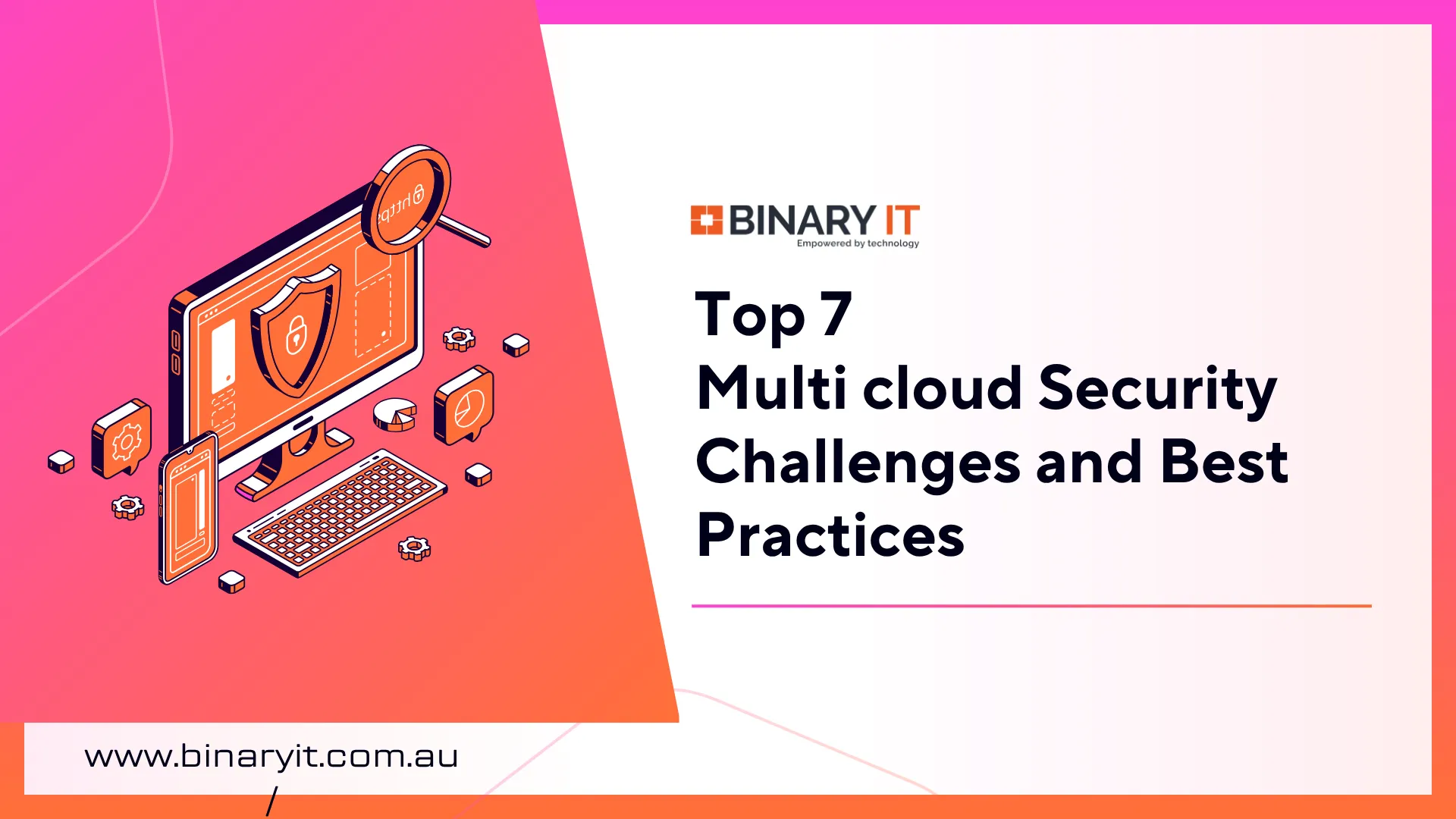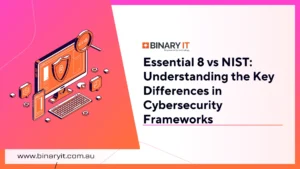Have you ever thought why so many companies are adopting multi-cloud systems? Multi-cloud strategies have emerged as the new normal as organisations are going through the digital transformation. As per Gartner, over 75% of large enterprises will adopt multi-cloud strategy by 2025 that allows businesses to innovate faster, optimise costs and flexibility. However, this flexibility comes with security vulnerabilities and security complexity.
Managing security with multiple cloud providers like AWS, Azure, Google Cloud, and other platforms means dealing with different architectures, security policies, access controls and compliance standards. For companies to effectively manage, monitor, and safeguard their assets across multiple cloud environments, cloud security services are essential.
In this blog, let’s explore what multi-cloud security is, why is it important, common cloud security risks and threats, the top seven multi-cloud security challenges, and the best practices to overcome them.
What is Multi-Cloud Security?
The term “Multi-Cloud Security” refers to the procedures, tools and policies that aim to protect information, applications, and infrastructure in multiple types of cloud environments – often involving several providers like AWS, Microsoft Azure, Google Cloud, and others. Multi-Cloud Security is a particular approach that helps safeguard your organisation’s assets, including sensitive client data and applications, against attacks across all your cloud environments.
The key areas of multi-cloud security are:
- Identity and Access Management (IAM): IAM regulates who has access to which assets across multiple clouds.
- Data Protection: Data protection is the process of guaranteeing secure data transfer between platforms, encryption, and compliance.
- Monitoring and Visibility: Establishing a centralised record of security events among all cloud providers.
- Governance and Compliance: Ensuring that each cloud’s configurations comply with internal guidelines and legal standards.
Read More: What is Cloud Security and Its Types?
Why Multi-Cloud Security Matters
As enterprises scale their cloud operations, multi-cloud security services have become a corporate necessity because they help reduce vendor workload for reasons like performance optimisation, geographic reach, and cost efficiency. Without a cohesive security framework, the complexities of these services can quickly turn into vulnerabilities that attackers exploit.
Here are the factors that explain why multi-cloud security matters:
- Safeguarding Sensitive Data: Every company has a different security model. Weak encryption settings or uneven access rules can expose data in the absence of unified controls.
- Enforces Uniform Policies: By lowering the risks associated with misconfigurations and fragmented oversight, it assists in enforcing uniform security policies, access restrictions, and data protection requirements across all cloud environments.
- Enhances Data Protection: Multi-cloud security guarantees that only authorised staff can access sensitive data that is stored across various clouds and that it is consistently encrypted, backed up, and secured.
- Ensures Compliance: By offering a centralised method of monitoring and managing compliance across several platforms and geographical areas, multi-cloud security is essential for fulfilling a variety of complex regulatory requirements, including data storage laws.
- Controls a Greater Attack Surface: Using several cloud platforms increases the number of sources of entry for malware and botnets. This increased risk surface is managed and secured with the use of multi-cloud security.
- Unified Visibility and Control: It makes monitoring, threat detection, and incident response across all platforms easier by providing a centralised view of the complete cloud environment
Top 7 Multi-Cloud Security Challenges
In a rapidly evolving digital-first world, organisations increasingly rely on multi-cloud strategies to enhance flexibility, prevent vendor lock and optimise cost. However, managing security across several providers introduces new layers of challenges that can’t be overlooked. Let’s take a closer look at the top seven multi-cloud security challenges:
| S.N | Challenges | Description | Solution Tip |
| 1. | Limited Visibility & Fragmented Monitoring | In a multi-cloud configuration, workloads and data are split among multiple providers, each of which has its own dashboards and monitoring tools. Due to this fragmentation, security teams find it challenging to keep a consistent perspective of activities across all settings. | One solution is to implement a centralised monitoring and logging system (such as a CSPM or SIEM tool) that can provide real-time insights into your whole cloud ecosystem and aggregate security data from all platforms. |
| 2. | Inconsistent Security Policies Across Clouds | Every cloud provider has different security measures, compliance frameworks, and configurations, whether it’s AWS, Azure, or Google Cloud. This difference frequently results in policy drift when permissions and regulations vary depending on the context. | Simplify setups and maintain uniform security rules across clouds, implement a unified security framework and employ automation tools like Infrastructure as Code (IaC). |
| 3. | Identity and Access Management (IAM) Complexity | It can easily become overwhelming to handle user identities, rights, and access controls across multiple clouds. Insider threats and illegal access are made more likely by uneven authentication techniques, overlapping credentials, and excessive privileges.
|
Use Zero Trust principles and federated identity management to make sure that all access requests, independent of cloud platform, are validated and comply with the least privilege principle. |
| 4. | Misconfigurations and Configuration Errors | Simple setup errors, such as an open storage bucket or an improperly applied firewall rule, are among the most frequent reasons for cloud breaches. The risk grows in a multi-cloud setting, where each provider has unique tools and settings. Sensitive information or systems could be made publicly available on the internet by even a minor mistake. | To find and fix configuration errors before they result in security issues, use automated configuration scanning and continuous compliance solutions. |
| 5. | Integration Barriers in Hybrid and Multi-Cloud Environments | A hybrid architecture is created by many companies that interface with physical infrastructure in addition to operating over multiple clouds. It can often be difficult to ensure smooth security integration between different settings. Inconsistent protection and visibility gaps may result from various network settings and security systems. | Implement unified security management tools that ensure consistent threat response, policy enforcement, and monitoring across on-premises and cloud systems. |
| 6. | Data Security and Compliance Risks | Encryption, data privacy, and regulatory compliance become more complicated when data is spread across multiple cloud providers. Different geographical locations may be used by each platform to store data, which could lead to legal issues with regulations like GDPR, HIPAA, or PCI DSS. | To ensure compliance with all applicable rules, implement data classification and encryption policies, monitor data flows, and employ Data Loss Prevention (DLP) solutions. |
| 7. | Operational Complexity and Skill Gaps | It gets harder to manage all of the security tools, APIs, and configurations that come with using multiple cloud services. The possibility of configuration errors, tool fatigue, and ineffective incident response increases with the number of platforms you manage. Additionally, many teams lack the necessary knowledge to properly secure multiple platforms. | Reducing the operational burden and increasing overall efficiency can be achieved by streamlining operations using automation, cross-platform security training, and managed security services. |
Unlock Cloud Security Insights Today! Find a comprehensive article on “Cloud Security“on our Binary IT’s website to keep your cloud safe as it deserves the best protection.
7 Best Practices to Maintain Multi-Cloud Security Services
Your company can be benefit from enhanced adaptability, scalability, and creativity with a comprehensive multi-cloud strategy. Yet, protecting this complex setting calls for a coordinated and proactive strategy.
By implementing following best practices, you can lower risks across different platforms and improve your multi-cloud security strategy.
1. Establish Centralise Security with Unified Governance and Policy Management
Centralise security involves establishing a uniform security framework that is applicable to all of your public clouds, including AWS, Azure, GCP, and others. To enforce rules consistently, you use a Cloud Security Posture Management (CSPM) solution or an equivalent platform instead of maintaining different security tools and policies for every provider. This significantly lowers the possibility of misconfiguration, a major contributor to cloud security breaches.
2. Always Encrypt Data
Protecting your data when it’s in transit (when transferring between clouds or services) and at rest (in databases, storage) requires encryption. Without the right keys, the data is unreadable even if someone else has access to your environment. This procedure helps to guarantee compliance and lessens the harm caused by a data breach.
3. Enforce Unified Identity and Access Management (IAM)
Although every cloud has its own IAM system, it can be difficult and prone to errors to manage various user lists, roles, and permissions across clouds. Regardless of the cloud that a user or service is using, a unified identity and access management (IAM) strategy uses a single identity provider (such as an IDaaS solution) to provide uniform access controls and Multi-Factor Authentication (MFA) for all users and services. This stops illegal access and privilege growth.
4. Adopt the Principles of Zero Trust
Zero Trust implies that, even when a user, device, or workload is within your network perimeter, you should never blindly trust them. Every resource access request needs to be validated, authenticated, and approved according to the context (who, what, where, and when).
5. Incorporate DevSecOps
DevSecOps is a “shift left” approach that incorporates security procedures into each stage of the development and operations pipeline. You may identify security vulnerabilities early by automating vulnerability scans, configuration evaluations, and security checks prior to apps being deployed to any cloud. This guarantees that application configurations and infrastructure-as-code (IaC) templates are automatically secure on all cloud platforms.
6. Constant Monitor, Audit, and Assess
Since cloud environments are dynamic, real-time visibility is essential. Tools that compile logs and alarms from all cloud providers into a single dashboard, such as SIEM or CNAPP, must be put into place. Constant monitoring makes it easier to spot suspicious activity, guarantees continued adherence to rules, and confirms that security measures are operating as intended 24/7.
7. Develop a Comprehensive Incident Response Plan
A clear Incident Response (IR) plan specifies what should be done in the event that a security incident happens in any of your clouds. Procedures specific to the cloud for identification, containment, eradication, and recovery must be included of this approach. A tested cross-cloud IR strategy reduces downtime, prevents financial and reputational harm, and guarantees a more rapid and well-coordinated recovery process.
Conclusion
Adopting several clouds has many advantages, such as cost savings, flexibility, and resilience, but there are also significant risks involved if a security plan isn’t well specified. For organisations to properly manage their multi-cloud systems, visibility, automation, and governance must be given top priority.
In addition to reducing security risks, companies can fully utilise multi-cloud infrastructure by implementing a uniform, policy-driven, automated strategy.
Your multi-cloud environment deserves secure and reliable protection. Secure your multi-cloud ecosystem with comprehensive, proactive and planned strategy. Contact Binary IT today to schedule a Multi-Cloud Security consultation and secure your company’s data from cyber threats. Your multi-cloud environment deserves proetction, and we are here to deliver it.





